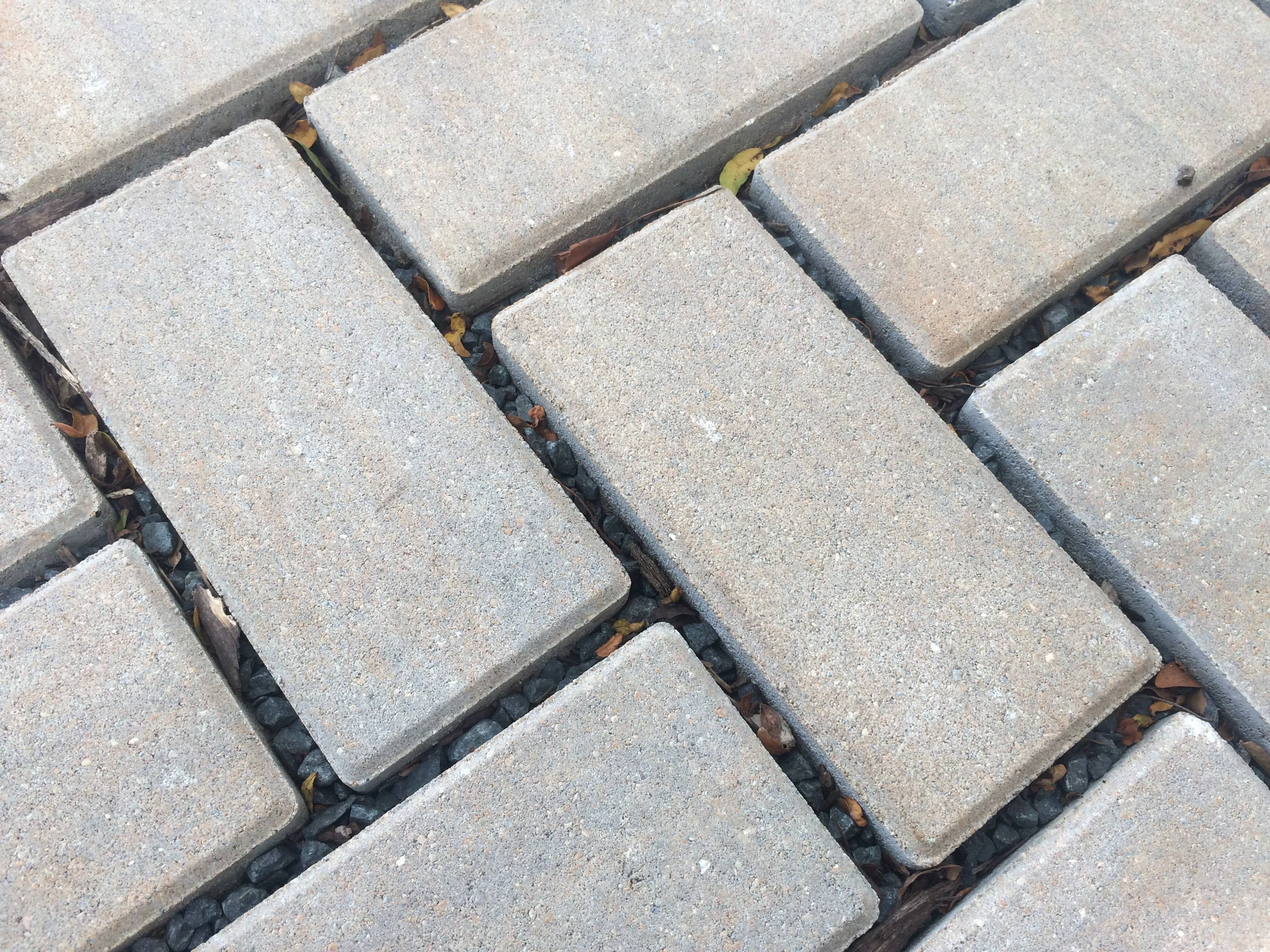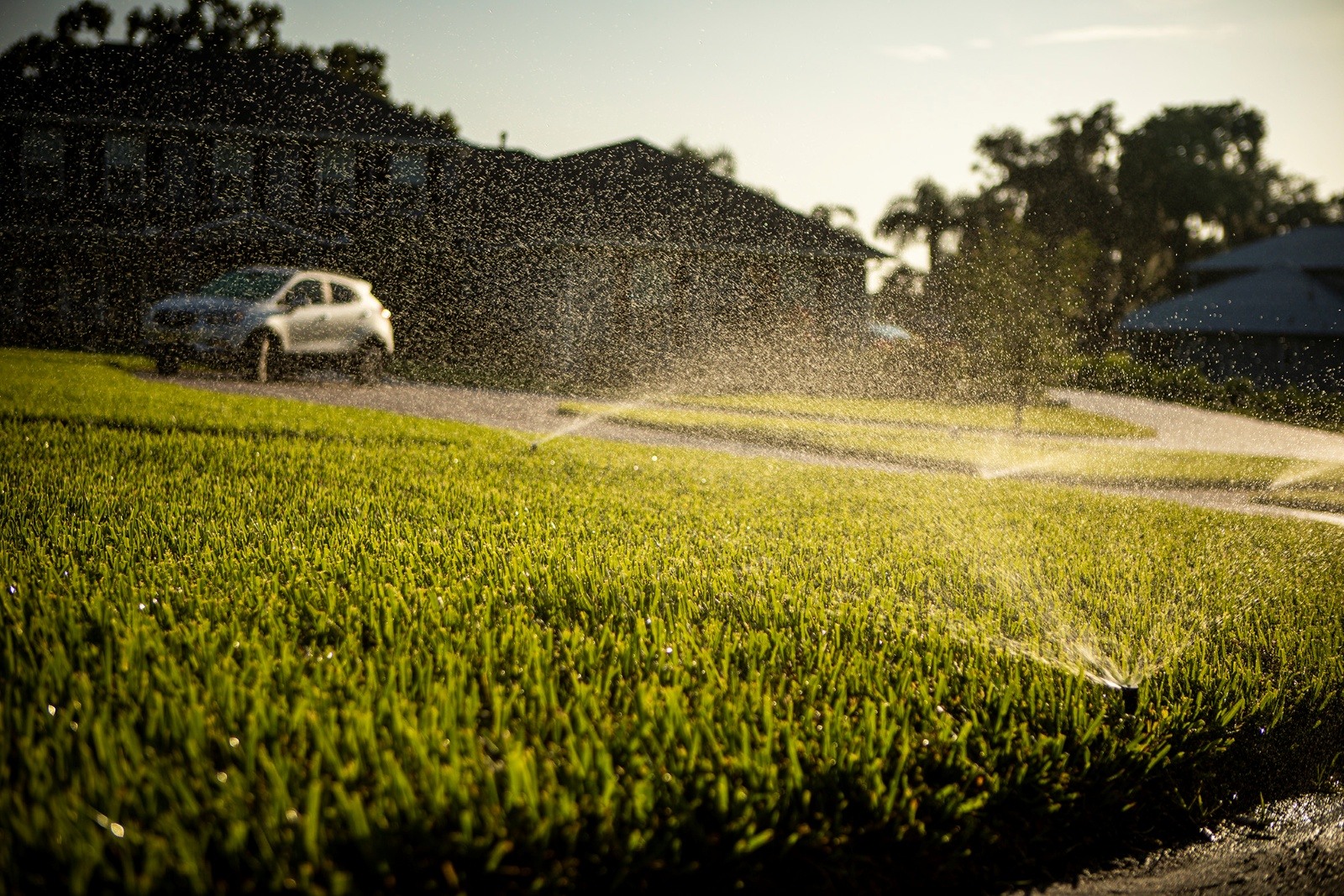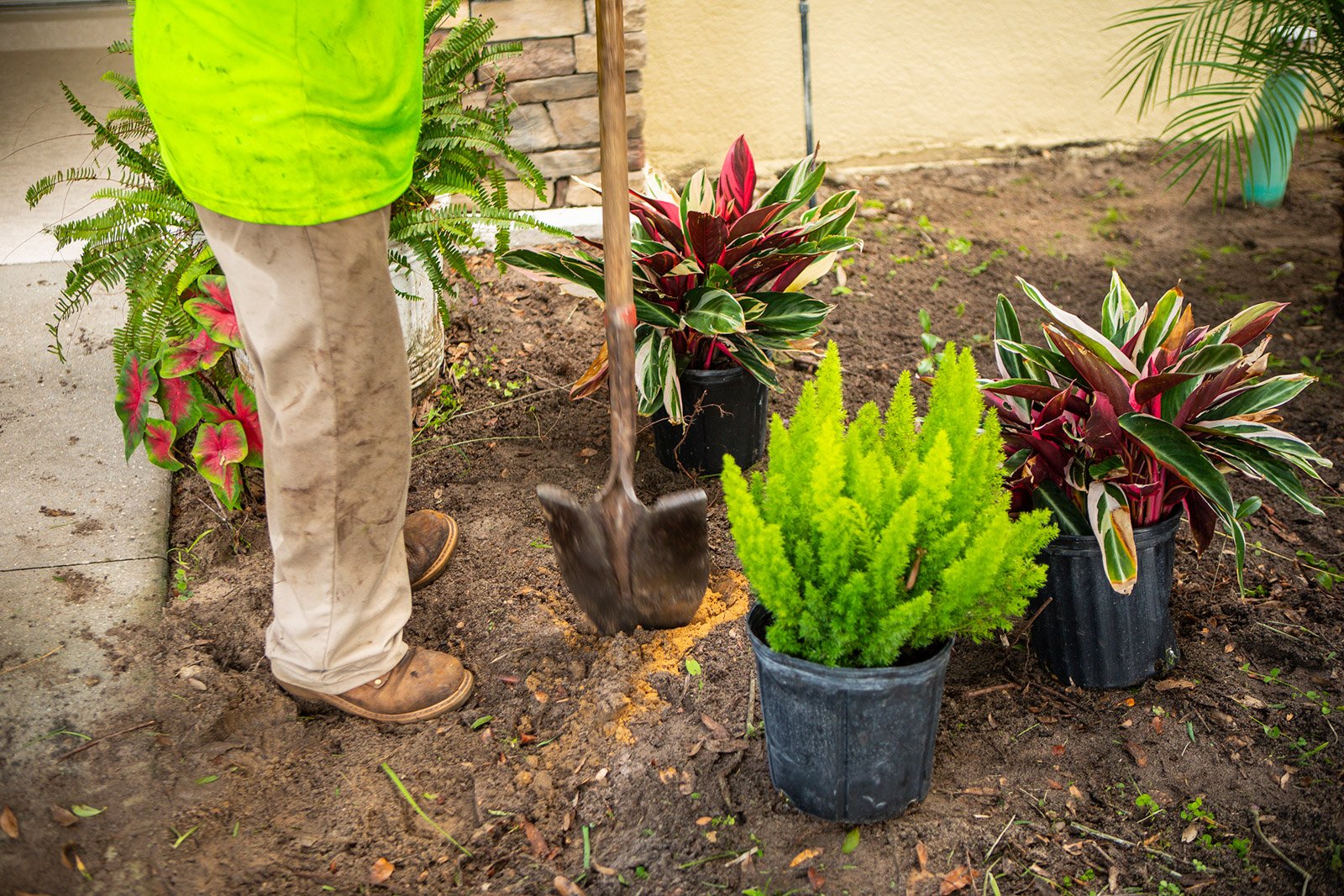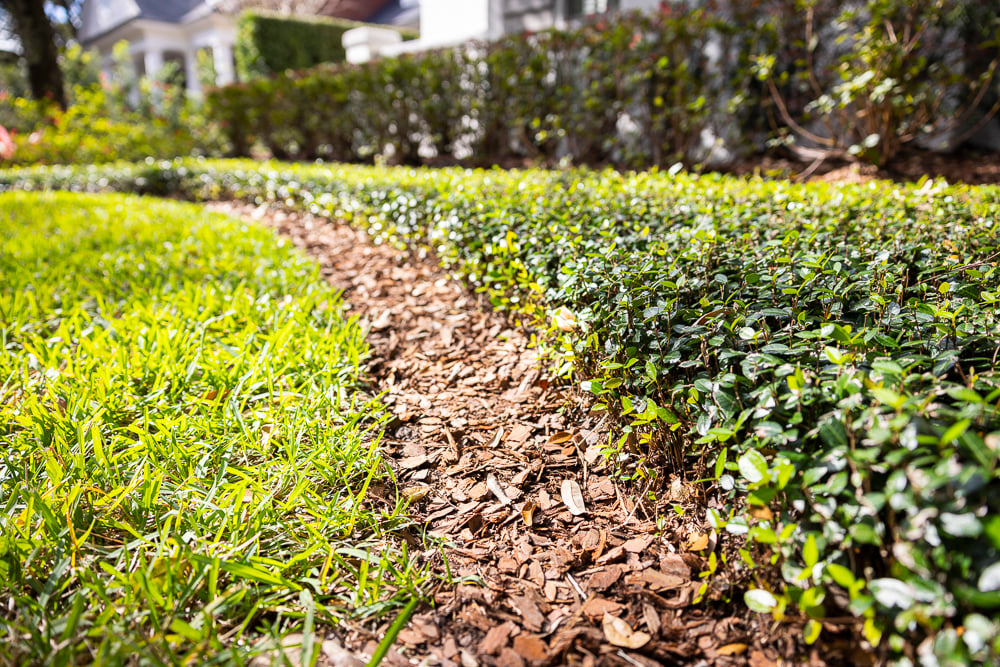Your trusty irrigation system is hanging out, doing its thing, keeping your lawn green and your flowers healthy.
Then, one day, a truck full of concrete pavers shows up. A skid steer starts zooming around. There’s talk of new sod.
What the heck? Your irrigation system is understandably anxious. What about all its lines tenderly tucked underground? What about all its reliable sprinkler heads?
A new landscaping project is exciting — to you. But will there be lawn irrigation damage your sprinkler system should stress out about?
What adjustments are needed? How to make sure your lawn irrigation coverage still reaches everything it needs to water?
It’s all good. Let’s take a look.
Plan on Some Adjustments
When you get an irrigation system installed, every element is perfectly planned — exactly where to put the sprinkler heads, how many to install, how many per zone, what type should be used, how far they spray. There’s a lot going on out there.
Your lawn irrigation coverage is perfectly designed to expertly water the landscaping the way it is right now.
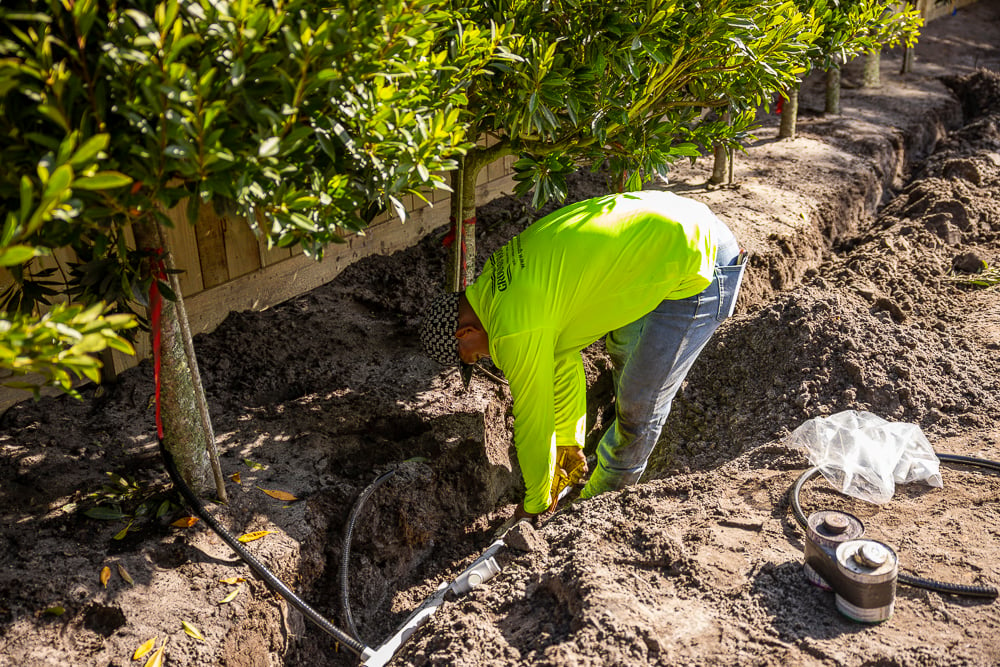
When you make changes to your landscaping, your irrigation system has to change, too. You want to be sure any new sod or new planting beds get the water they need. You don’t want water going where it shouldn’t, like watering hardscape. And you don’t want any lawn irrigation damage.
That means some lawn sprinkler tune-ups to make sure your system still waters everything efficiently:
Sprinkler Heads
Sprinkler heads are the workhorses of your irrigation system, delivering the water to your lawn and plants.
Your current heads might need to be relocated so water hits a new flower bed or area of lawn — and doesn’t douse your new patio. (Oops, sorry Aunt Penelope.)
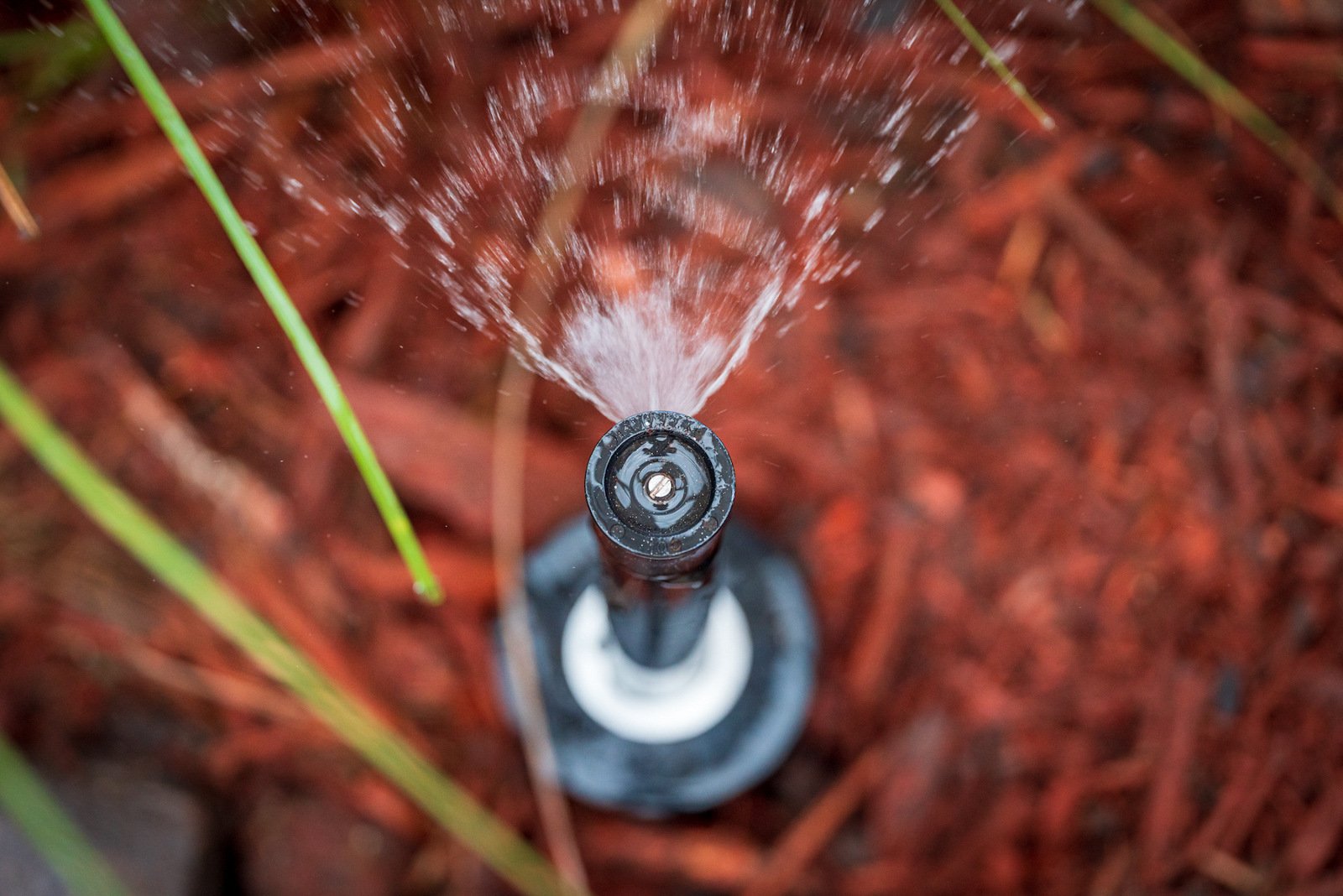
Or you might need additional heads, or different types of heads, to make sure your lawn irrigation coverage perfectly waters your landscape additions.
You might need taller sprinkler heads to clear taller new plants or a new variety of sod. Floratam St. Augustine grass should be maintained at 4 to 4.5 inches high.
If you’re getting that, your sprinkler system needs 6-inch heads, not 4-inch, because they rise up higher to clear the taller grass.
Got Bubblers?
You might need them now if you’re adding new trees to your landscaping.
Bubblers are small irrigation heads designed to flood the ground surface around a tree or shrub. The water sinks down into the root ball, helping to establish a deep and healthy root system.
Moving Irrigation Lines
Maybe existing lines are in the way of a new tree. Expert rerouting ensures there’s no lawn irrigation damage.
Installing a new patio? Ground Source crews will cut any irrigation lines in the way of your new patio and re-route them around the outside of it.
If an irrigation line is underneath a patio and a line breaks, the pavers will collapse. Not cool.
With paver driveways, the approach is a bit different. Irrigation lines stay where they are but are enclosed inside larger pipes to protect them. Then if an irrigation line breaks, the water spills out the side, protecting the driveway pavers from collapse.
You Might Need More Zones
A quick refresher course on zones:
Your yard is divided into a few different irrigation zones, set up with different sprinkler heads to make sure you have just the right lawn irrigation coverage to water efficiently.
Zones are set up so the different areas of your yard get the perfect amount of water for their unique needs, using a variety of sprinkler heads and proper spacing. Native plants need less water than lawn. Sunny areas need more water than plants in the shade.
If you’re adding areas of sod or plants, you might need to add or adjust zones to accommodate the additional watering and ensure great lawn irrigation coverage.
Time to Add Drip Irrigation?
If you’re adding new flower beds, it’s a great time to add drip irrigation.
Unlike a typical sprinkler system that sprays water from irrigation heads, drip irrigation uses hoses pierced with tiny holes that allow small quantities of water to trickle slowly into the soil.
What’s so great about drip irrigation?
- It’s healthier for plants. A drip irrigation system delivers all the water to your plants’ roots, not their leaves. Wet leaves encourage fungal diseases that can kill your plants.
- It saves water. Drip irrigation uses less water than typical sprinkler systems because it’s applied directly to the plants. There’s no water waste from evaporation because water isn’t spraying into the air.
- It’s adaptable. You might want to add more beds down the road, or expand the ones you have. When changes happen, a drip irrigation system is easily modified for your new plan.
As long as you’re adding drip irrigation, here’s a cool thing: your installers can run tubes up through the bottoms of your planters that tie into your irrigation system. Tiny emitters connected to the tubes water your plants — no more pesky hand watering!
Have Irrigation Needs in Central Florida? Trust Ground Source
Not every landscaping company also does irrigation.
At Ground Source, we’re always building patios, expanding landscaping, installing new sod lawns. It’s what we do. There’s often existing irrigation we need to work around.
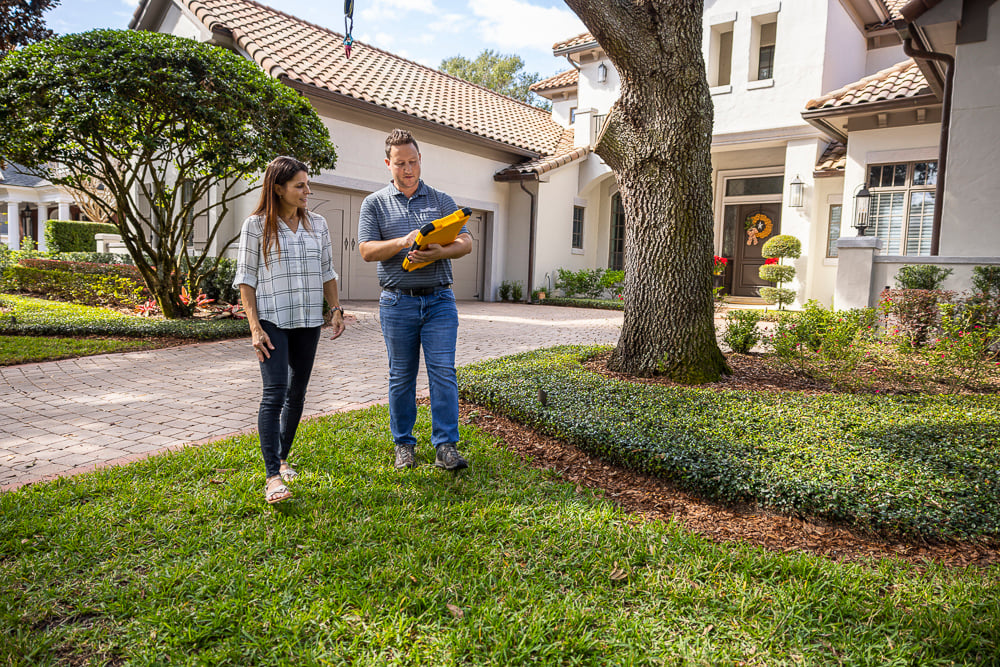
The great news? We’re also experts in lawn irrigation in Central Florida, so we know exactly what to do to ensure your irrigation system perfectly accommodates your new landscaping. We can expertly add your new landscaping elements without any lawn irrigation damage.
We’re irrigation experts, and we’re with you every step of the way as you plan your perfect outdoor space.
Sod, irrigation, landscape design: Let us transform your landscape from an embarrassing eyesore to a place you spend every spare minute.
Are you ready to enjoy the vibrant, impressive landscape you've always wanted? Request a quote today! We’ll help you review your options and then transform your property.





